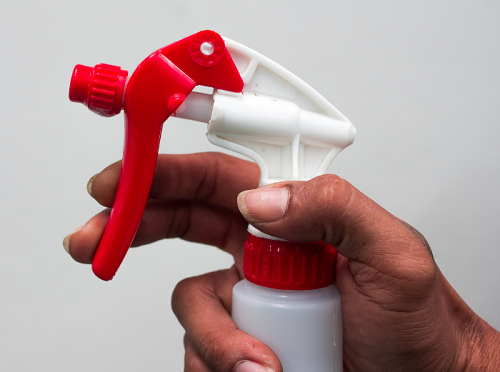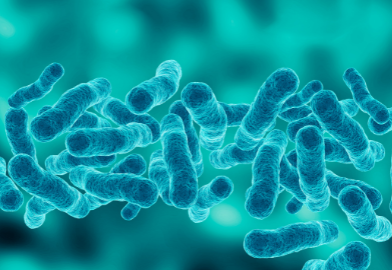Information provided for conversational purposes only and not representative of our products. In the US, only EPA registered products can be used to mitigate, reduce, or eliminate pathogens. To connect with a Betco probiotics expert, please click here.
Probiotic cleaners are a safer and more sustainable alternative to traditional cleaners. They provide extended cleaning benefits, continuing to work long after application. In a decade rife with global pandemic, it’s important to know how probiotic
cleaners support a healthy environment. Several studies have been conducted to investigate the theory of competitive exclusion, where good bacteria outcompete the bad bacteria for the same resources, eventually causing the elimination of the bad bacteria.
Two studies performed in Europe delve into the effect probiotic cleaners have on biofilms within a hospital and dental office, comparing the level of harmful bacteria before and after probiotic application. A biofilm is a microscopic biological community
fostered on any surface, from doorknobs to a kitchen counter. This film provides useful insight into the health of its environment, as biofilms host the growth of bacteria and pathogens, both helpful and harmful. Read on to learn what researchers
discovered.
Methods Used
Probiotic cleaning solutions most commonly utilize Bacillus spores. Bacillus is a “positive” bacteria, meaning it will not cause human disease nor negatively impact plant and animal life. Both studies swabbed various
locations around their respective environments, gathering data on currently existing biofilms prior to treating with probiotic cleaners.
The dentist’s office gathered samples from 11 sites around their facility, including sinks, patient head rests, dentist chairs, a keyboard inside the clinic, and more. The hospital team focused on testing surfaces rather than locations and surveyed
linoleum, ceramic, and stainless steel. Each test site’s pathogenic bacteria levels were recorded prior to being treated with a Bacillus-infused probiotic cleaner.
Stay Informed: Take Clean Further with Betco
Subscribe to Betco emails to join thousands of other industry professionals and get the most helpful blog posts, the latest news, new product notifications, and invitations to our events conveniently in your inbox!
Yes, Sign Me Up!
 The hospital study created an 8-month cleaning regimen, treating their surfaces with tap water, soap, a disinfectant, and a probiotic cleaner, measuring the effects of each on resident biofilms. The dentist office treated locations with a probiotic cleaner
only and let the samples mature over the course of several weeks. Post-application cycles, both studies then measured the bacteria and pathogen levels of the treated areas. A pathogen is defined as “an organism with the ability to cause disease
in a host.” Pathogens exist in the form of bacteria, viruses, fungi, protozoa, and worms, meaning they exist in various forms and are able to survive different environments without dedicated intervention.
The hospital study created an 8-month cleaning regimen, treating their surfaces with tap water, soap, a disinfectant, and a probiotic cleaner, measuring the effects of each on resident biofilms. The dentist office treated locations with a probiotic cleaner
only and let the samples mature over the course of several weeks. Post-application cycles, both studies then measured the bacteria and pathogen levels of the treated areas. A pathogen is defined as “an organism with the ability to cause disease
in a host.” Pathogens exist in the form of bacteria, viruses, fungi, protozoa, and worms, meaning they exist in various forms and are able to survive different environments without dedicated intervention.
Discovery: Probiotic Power
"Both studies presented the same conclusion: probiotic cleaners lessen the presence of harmful pathogens within resident biofilms."
Both studies presented the same conclusion: probiotic cleaners lessen the presence of harmful pathogens within resident biofilms. Teams at each location tested and recorded their biofilm contents following treatment with probiotic cleaners. The dentist
office tested various high-bacteria locations within their office, reporting that the probiotic cleaner was able to penetrate biofilms and eliminate harmful bacteria from hard-to-reach places – including bacteria that causes staph (staphylococci)
and strep (streptococci) infections. What’s more, not only did the probiotic cleaner remove potential health hazards, the harmful bacteria were replaced with the non-pathogenic “good” bacteria from the probiotic cleaner, promoting
a healthy environment and supporting the competitive exclusion theory.

The hospital reported similar results, with the bacteria within the probiotic cleaner outcompeting the pathogens. In other words, the pathogens could not survive since their resources were consumed by the “good” non-pathogenic bacteria.
In comparison to the surfaces treated with tap water, soap, and a chemical disinfectant, the probiotic cleaner encouraged beneficial biofilm production while discouraging the continued growth of harmful pathogens. In summary, probiotic cleaners
establish inhabitable environments for pathogens, building a safer environment for human health.
To learn more about the studies summarized above, please click here for the hospital research and here for the dentist office report.